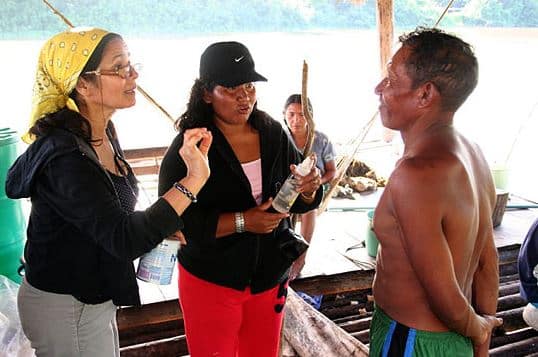In July 2007, children started to die of an unknown illness. But these were not children living in some wealthy cosmopolitan centre. They were indigenous Venezuelans from the Warao group, residing in the Orinoco Delta, a marginal region within a globally marginal country.
The children first became feverish, lost control of their limbs, and became confined to their hammocks. Then they began having terrifying dreams, speaking incoherently, salivating profusely, and were completely intolerant of drinking water. Eventually, unable to raise their heads and scarcely conscious, they would die.
Even just from this symptom picture, some readers may be able to see that the disease was rabies. Yet by the end of the year, 15 Warao children had died in this fashion. In January-February 2008, four more died, and then in June 2008 another 17 died.
The disease remained unidentified until the coincidental arrival in mid-2008 of American anthropologist Charles Briggs and his physician and public health worker partner, Clara Mantini-Briggs. Working with local leaders, listening to victims’ families and speaking in their own language, they were able to identify the disease and its cause: a spate of bites from vampire bats, itself the result of an epidemic that killed a large number of chickens the previous year, thereby depriving the bats of their usual source of “food.”

How did the disease causing the epidemic remain unidentified for so long? The circumstances parallel the initial response to Covid-19 in Wuhan. Reports of a new, unknown disease were seen as politically destabilising and a threat to local authorities. Those in power tried to sweep the issue under the rug, hoping it would go away.
But the difference from Wuhan is how marginal the Warao are, not just geographically but politically. Their accounts were often suspected to be superstitious or ignorant. Investigative hypotheses presumed Warao people didn’t bathe their children properly, or drank contaminated water. Thus, their stories of what was happening were not taken in their own terms. It was only with the arrival of the North American “expert” that the issue was taken seriously, and Warao people were then able to mobilise authorities to implement a rabies vaccination campaign.
Unfortunately, these kinds of prejudices about what the Briggs’ call “discursive authority” are directed precisely against the people most likely to be interacting with wild animals. In other words, the people most likely to face the next zoonotic outbreak are the people who are generally accorded the least credibility. Yet they’re exactly the people we will need to be listening to next time around.